Creative design trends for online retail in 2016
The retail industry on the whole continues to evolve at a rapid rate. Largely, consumers’ growing wants and needs drive changes in all aspects of the retail industry, including online/eCommerce.
Web design is one aspect of retail that is evolving very quickly – it adapts to consumers behaviour and technological advancements at a rapid rate. The creative design aspect of a retailers’ online store can be one of the first contact points with a brand and therefore it is important to get this right.
Staying ahead of the design curve can be tricky considering how quickly online creative design progresses. We’ve looked as some of the growing trends for online retailers in 2016.
Increase of common User Interface design patterns
With online stores needing to adapt their websites to become device responsive, one of the results has been a similarity in the design of many sites. Having common User Interface (UI) design patterns helps consumers in their use of your site – they almost act as a shortcut through the navigation and consumers are confident in understanding and using them. Some of these things common user interface designs include;
The hamburger menu: this is a widely used and therefore easily recognisable design. Red Balloon – named as one of SmartCompany’s Top 20 Online Retailers - 2015 use this as a tool in their responsive design.
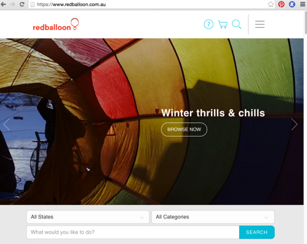
Account registration: This is a pop up encouraging consumers to sign up via a quick form or a button allowing you to register using your social media account. This allows consumers to get the sign-up process done early thus reducing ‘friction’ and enabling easier conversion to sales.
Temple & Webster do this and to further encourage customers they offer a discount to sign up as well.
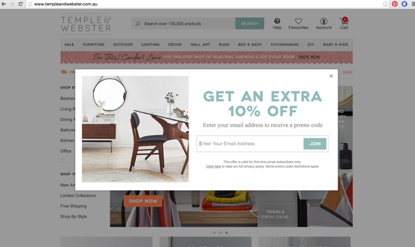
Airbnb have implemented a registration button through social media and this helps them capture details quickly so that they can follow up with consumers after they have stopped searching. They understand that for many of their customers they often look at accommodation more than once, sharing with their travel partners before committing and booking. By capturing the details before the booking they are able to follow up straight away and re-engage with their consumers in order to ‘close the sale’. We love how both Temple & Webster and Airbnb use this to better engage with their customers having understood what will encourage them to sign-up and how they use their services (respectively).
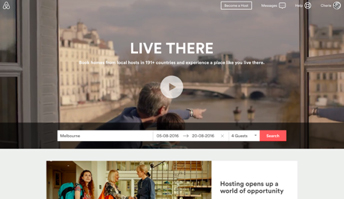
Card Layouts: Acting like ‘content containers’ this design is becoming increasingly popular and was brought to life by Pinterest. Customers are familiar with the navigation and find it easy to digest the information. This is particularly useful for eCommerce site with lots of categories and products. The Iconic uses this technique and is one of the newer players on the Australian fashion retail scene. Founded in 2011, by 2013 they turned over $31 million. This works extremely well for The Iconic as it helps break down their multitude of products into more manageable chunks based on fashion trends – they have essentially brought magazines to online eCommerce. Based on how consumers have be trained to read fashion trends this is a terrific technique for them.
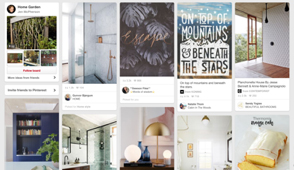
Hero images: This is the first thing that your customers will see – it is often the first ‘formal’ engagement with your brand and recent studies have shown that when customers land on a page with a large, unique, beautiful image they tend to stop and take a look – which is exactly what you want them to be doing. Nike use hero images particularly well to engage with their customers and have a combination of product, lifestyle and sport images.
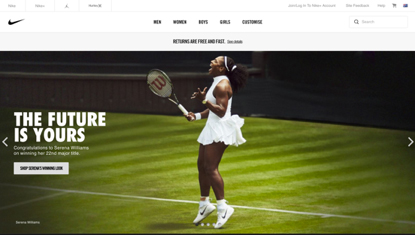
Long Scroll: Increasingly popular – especially given the rise of mobile phone use for shopping online, consumers intuitively scroll web pages now and often prefer to scroll instead of clicking links and waiting for the content to appear. With recent research on user experience (UX) conducted by Huge Inc showing that despite the layout structure nearly 90% of visitors will scroll until the bottom.
VinoMofo have implemented a great long scroll format website – it allows them to showcase some of their category of wines, but more importantly to tell the consumers about themselves. They also play on the format in a cheeky and engaging way, which is consistent with their brand. Long scroll is particularly effective for businesses wanting to tell a story and take consumers on a journey.
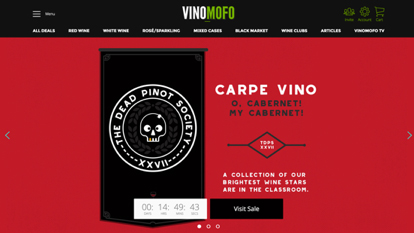
These are some of the leading user interface design trends that are becoming more and more consistent and common across a large number of leading eCommerce websites. The benefits of using common interface design patterns is that when a number of sites are designed around a similar layout with similar design patterns, buyers can easily navigate them without any hesitation, and with a sense of familiarity. This makes your eCommerce store more successful as it will improve your customers’ experience of your site and in-turn your ability to convert sales.
Beyond common interface design patterns there are some other trends emerging that can help retailers engage with their consumers in the swiftly changing world of online. Some of these include;
Rich Animation: Animation is being used more and more to help engage with consumers and aid the entertainment and interactivity of a website. Like anything it’s important to consider whether the addition of an animation will add to your brand and the users experience or detract from it.
This can include both large-scale animation – things like parallax scrolling, pop-up notifications and motion animation as well as small-scale animation – things like loading bars, loading spinners and hover animation.
Responsive Design: Hugely popular in recent years, especially given the rise of mobile internet usage as well as changes Google made to their algorithms (which penalised websites that were not suitable for mobile devices), responsive design is not set to go anywhere. Responsive design is a relatively simple way for businesses to build a fully functional mobile-friendly site. It is important to make sure your responsive design aids the customers experience and is implemented properly in order to perform at its’ peak. Hard-to-find is an excellent example of how responsive design can work at best. The design is clear, clean, easy to navigate and consistent – no matter what device.
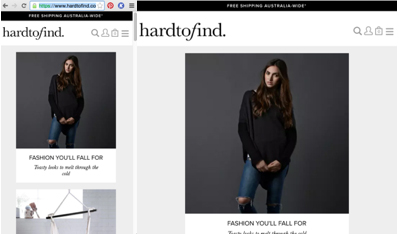
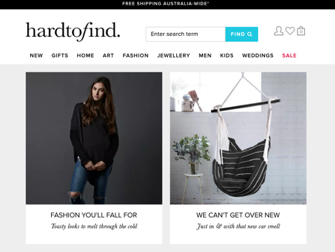
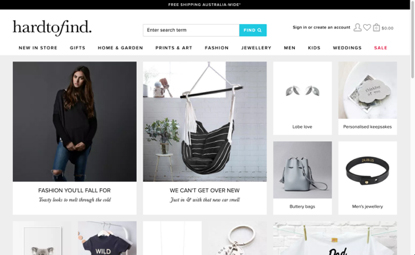
Flat Design: Flat design is used to accentuate products and increases usability. Generally incorporating a more minimal design look and feel – this style of design works for excellently for eCommerce sites where it shifts the focus more towards the products available on the site. The simple, fixed position navigation is becoming a common element of flat design.
Ultimately when looking at your eCommerce presence the most important thing is to understand your customers’ needs. Trends represent popular techniques for a reason, but it’s important to make sure you implement the techniques that are best for your users and fit into your overall strategy across all of your channels.
An effective online store comes down to a consistent brand personality that makes the customer journey as seamless as it can be. It’s important to remember that this journey often now incorporates many channels in a single purchase. For more information on how to optimise customer engagement in a multichannel world download our eBook here.
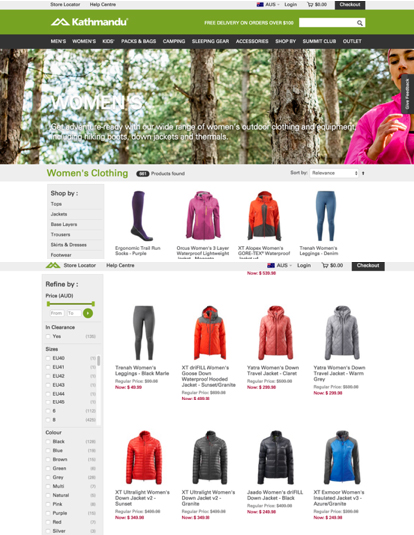
Discover Creative design trends for online retail in 2016. The retail industry on the whole continues to evolve at a rapid rate. Largely, consumers’ growing wants and needs drive changes in all aspects of the retail industry, including online/eCommerce.


